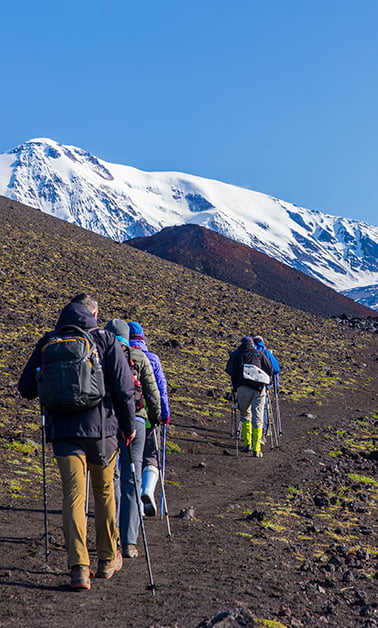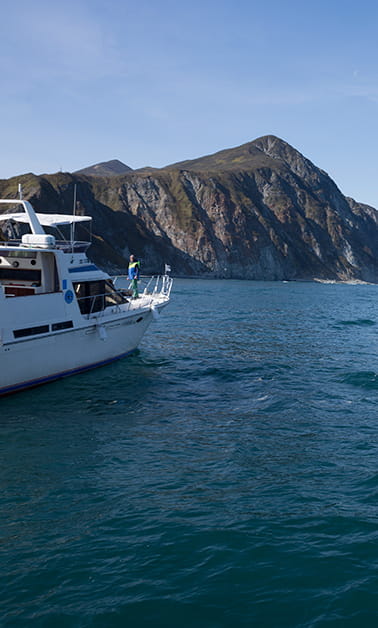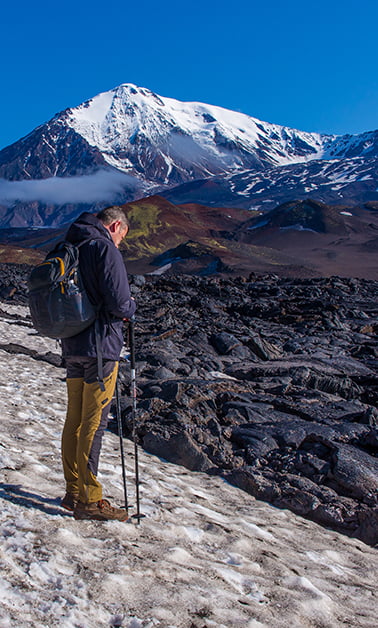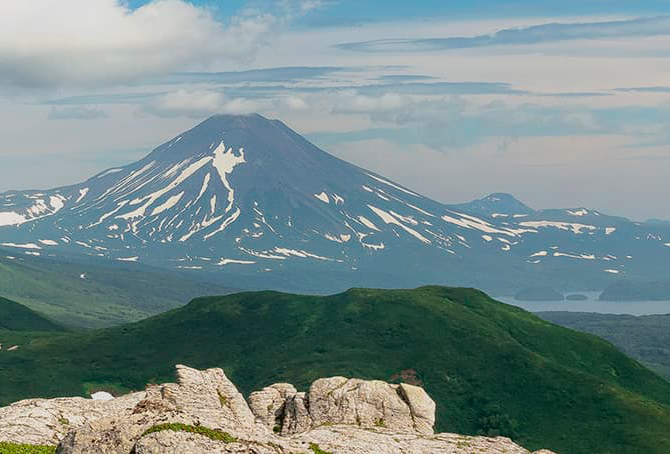
Tolbachik volcano: tourist eruptions
Plosky Tolbachik volcano is a volcanic massif in the east of the Kamchatka Peninsula. The specific feature of Plosky Tolbachik is liquid lava, which you can not see at any other active volcano in Kamchatka.
This is the volcanic range situated on the east of the Kamchatka peninsula and the part of the Klyuchevskaya Group. It is located 343 kilometers away from Petropavlovsk-Kamchatsky capital city of the peninsula. The range was created by two merged stratovolcanoes located on the base of the ancient shield volcano. This is extinct Ostry (Sharp) Tolbachik with broken summit (3 682 meters) and active Plosky (Flat) Tolbachik (3 140 meters).
The river with the same name “Tolbachik” flows near the volcano, its length is 148 kilometers.
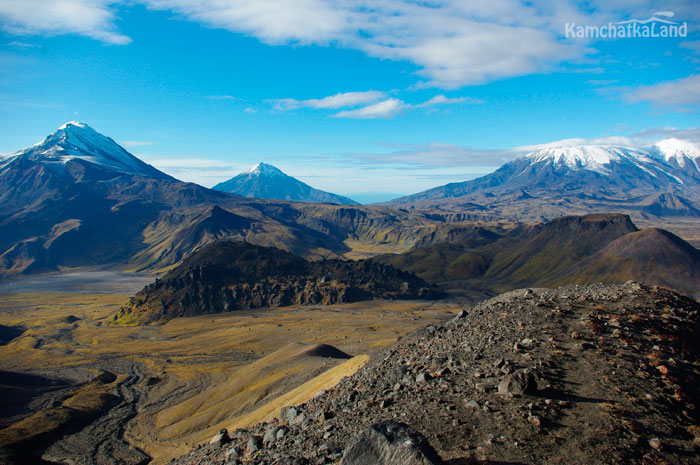
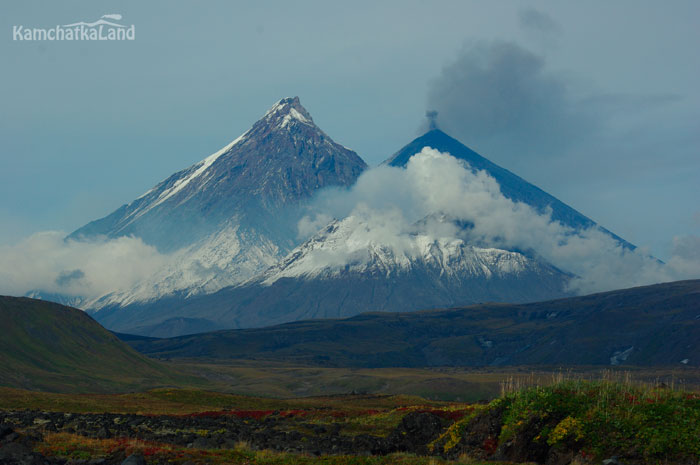
Ostry Tolbachik volcano
This is a stratovolcano with the ice-covered sharp top, the south part of which is broken. The lower part of the volcanic top is covered with the large ice stratum spreading to Plosky Tolbachik.
There are strongly pronounced barrancos and a famous glacier of Schmidt which is sloping down along the south slopes.
Ostry Tolbachik in Kamchatka is considered an extinct volcano with a height of 3682 meters. The date of the last eruption is unknown.
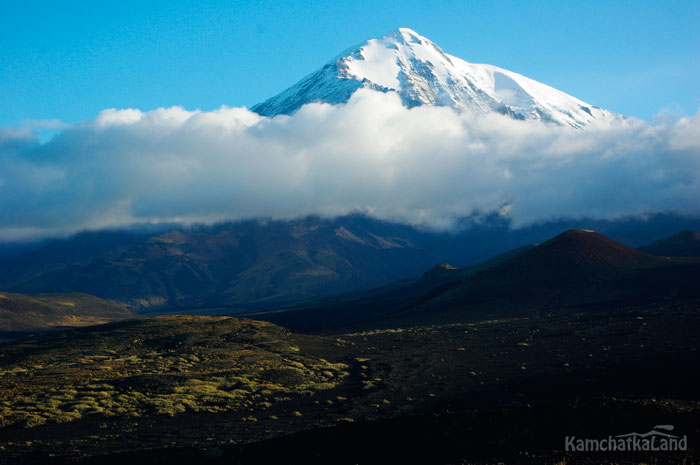
Plosky Tolbachik volcano
The summit of Tolbachik is cut by two merged calderas. First of them reaches a diameter of 3 kilometer and it was created about 6500 years ago during the powerful eruption. This caldera is covered with a small shield volcano and with a glacier which formed the specific flat summit. The volcano was called Plosky Tolbachik thanks to the mountain plateau. The old caldera has inside the young caldera with a depth of 400 meter and a diameter of 1,8 kilometers. It was formed due the last but one eruption occurred in 1975-76. The slopes of the volcano and the neighboring Tolbachinsky dale cover over 120 cinder cones which were formed during eruptions.
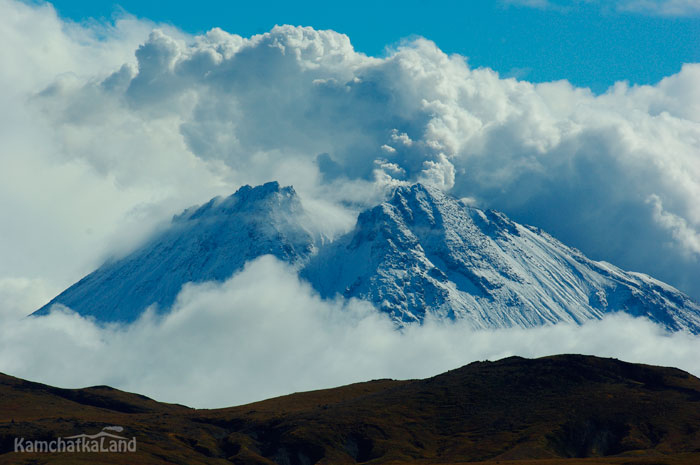
Eruption characteristics
12 eruptions with long breaks among them were recorded since 1740. In other words, Plosky Tolbachik rarely erupts but in case of eruption it lasts for a long time.
The specific characteristic of Plosky Tolbachik is having liquid lava which you won’t be able to see on any Kamchatka volcanoes. The volcanic eruption is not referred to the classical type of explosive eruption which means discharging a huge amount of fumes and ashes from the vent into the air reaching a height of a few kilometers. The eruptions of the volcano mean erupting of a large amount of lava and making fissures (strombolian eruption).
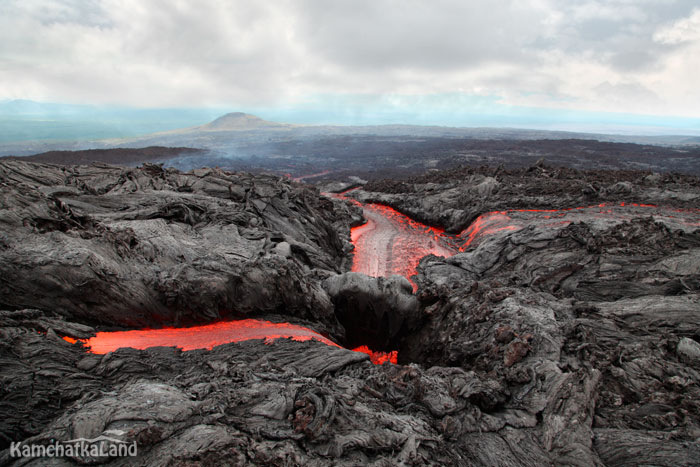
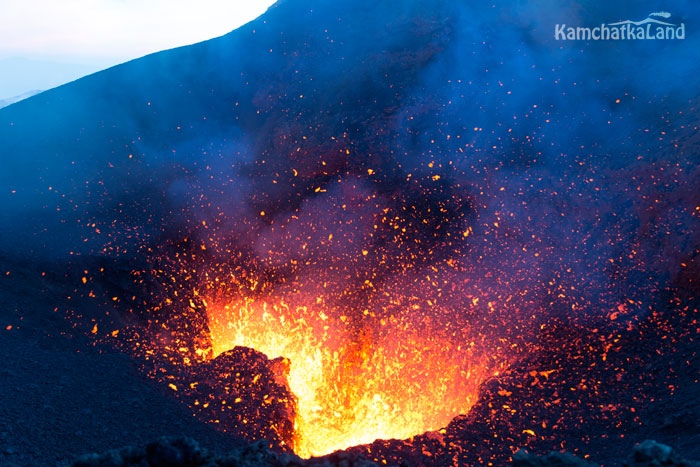
The emissions of gas and steams with choking smell of sulphur are erupted into the air at the height of 2600-2800 meters above the crater in 3-4 minutes. Ice and snow surrounding the crater melt, falling into hot lava, and mix with volcanic gases and then they are tossed up into the air. The lava in the crater is in such a liquid state so that it is sprayed into the atmosphere.
Such eruptions are called tourist ones with unscientific meaning, since they attract a lot of tourists because of their relative safety and possibilities for taking wonderful photos of flowing lava rivers. It’s possible to fly closer to lava flows by a helicopter during strombolian eruptions, as opposed explosive eruption type. The most three powerful eruptions of Tolbachik occurred in 1941, 1975-1976, 2012-2013.
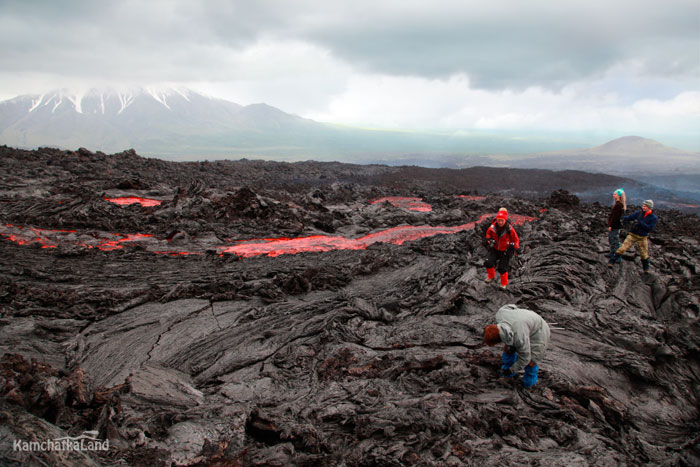
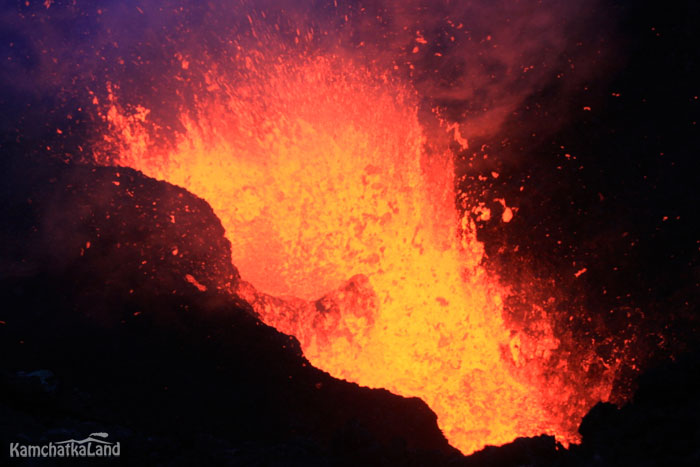
The eruption of 1941 occurred at the height of 1950 meters, at the southeast slopes. As a result, after fissure happening, the new shield cone with emitting of lava flows was formed. Today it is called “the cone of 1941” or “the cone 41”.
The most powerful eruption happened in 1975-1976 and it is called the Great Tolbachik Fissure Eruption (GTFE). As a result, the new shield cones and huge lava fields were formed.
The most recent but not less powerful eruption occurred in 2012. During the eruption the fissure with a length of 5 kilometers spreading from “the cone 1941” to the old cone “Kransny (Red)” which was broken, aftermath the lava streams flowed.
The volcano has another form not like before. There were changes not only in the landscape, in its lands and forests surrounding the volcano but also in the water of the river – it became acid.
Внешний вид вулкана уже не такой как прежде. Изменился не только ландшафт вокруг вулкана, его земли и стоящие рядом леса, но даже речные воды стали кислыми.
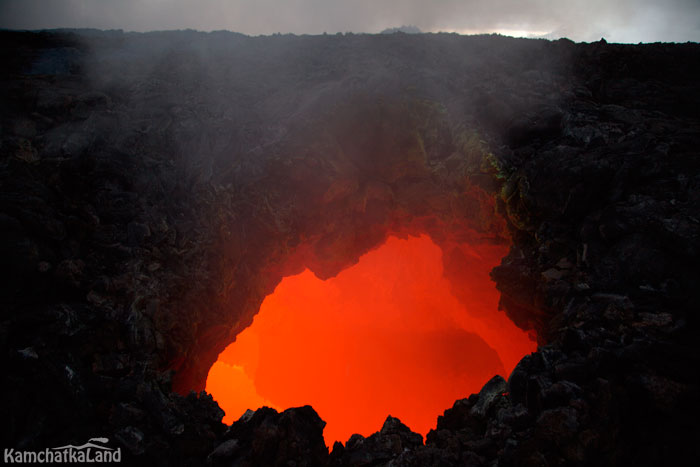
Lava caves of Tolbachik volcano
Lava caves had become known since the prehistoric time. They were first explored by Slezin Yury Borisovich.
Lava tubes are usually created from thin lavas. All so-called lava tubes are hidden under lava fields. After eruption the lava level in created lava tubes is downing so that there are lava caves with a length which can reach a few kilometers. After eruption of 1975-76 the caves with a length of 500 meters and with a diameter of 5 meters were formed there.
Later lava cave’s temperature decreases and thanks to it they become available for visiting and exploring.
After eruption of 2012-2013 the expedition group on Tolbachik volcano found that there are about 10 entrances to the caves of the new lava field. Air current is so strong so that you can hear wind noise. Other caves blew out the air, thereby making it very hot and sometimes temperature could reach 350 °С.
Now a lot of caves got their name, such as: Krasivaya (Beautiful), Bolshaya (Big), Goryachaya (Hot) etc. The Krasivaya cave is known that it has many-coloured stalactites placed on the cave ceiling. As well, there is the cave hall covered with white crystals of salt. Likewise, the Kholodnaya (Cold) cave surprises by its sizes and the flare won’t be able to light a whole space.
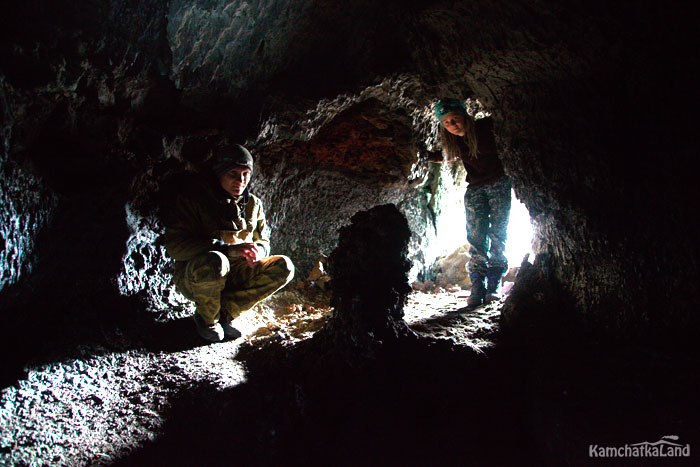
Diamond crystals in Tolbachik
This volcano is a fount for volcanologist-scientists and for those who explores minerals. Sophia Naboko was the first who started such scientific works more than 70 years ago. About 50 new minerals were found on the cones surrounding Tolbachik in the 19th century.
So, after eruption of 2012-2013 the diamond crystals of the new, unknown type were found. In the opinion of geologists, they are formed under the action of an electric discharge and under crystallization. The quantity of diamonds numbered more than 100 pieces and it was an anomalous figure which is comparison to enrichment of volcanic rock in India.
The size of the diamond are enough large and has own mineral and geochemical composition, thereby it allow us to separate out a new type – Tolbachik diamond.
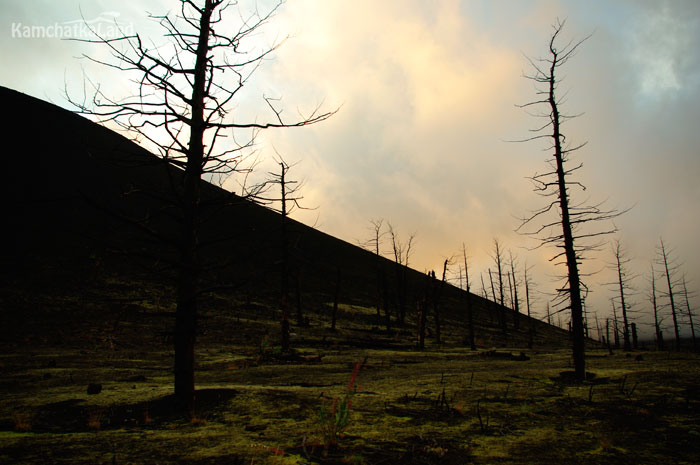
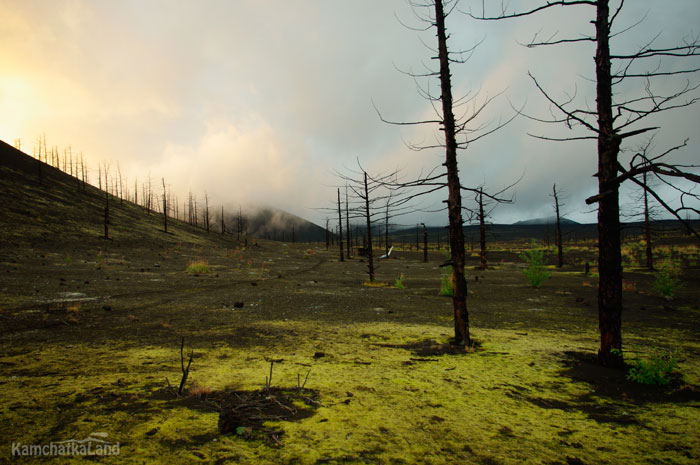
Tourist information. How to get there.
Ostry and Plosky volcanoes are in close to each other on the map. All the tourist groups usually start their traveling around Tolbachik from Klyuchi village which is situated 60 kilometers away from the volcanic range.
Local guides and experienced travelers think that climbing Plosky Tolbachik volcano is not difficult. There is no need to use mountaineering gear but climbing the summit requires physical training. Climbing takes about 6-8 hours and descent takes about 4-5 hours. The trip is arranged in summer and autumn, namely from July to September. Speleologists made the lava caves under Tolbachik for their training place a long ago and mountain bikers found their favorite place on the volcanic cones.
The climbing trip starts from the base of moon rovers. The first soviet space vehicles “Lunakhod-1” and “Marsokhod-2” were tested at the camp base in the 70th of the last century. After ending the tests Institute of Volcanology had a right to have the base there but now this place is for tourists’ base camp. The Vodopadnaya seismology station is located on the slope of Tolbachik at the height of 800 meters, studies of seismology condition and volcano’s behavior. The path starts from the station which is passing along solidified lava flows and the volcanic bombs sites. Ascent along the slope is enough gentle. On the way to the top you will go through snow fields.
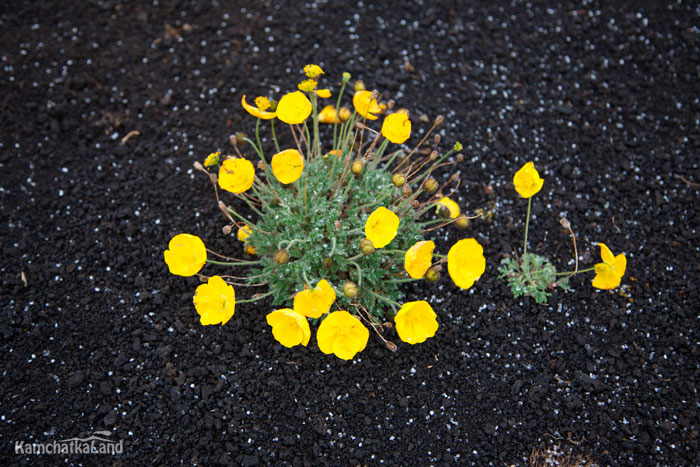
However, Ostry Tolbachik is very different. Climbing this volcano requires excellent physical training. It`s attracts not only lover of outdoor activities but also professional climbers who have repeatedly conquered it and knows very well about difficulties of climbing.
Popular tours with Kamchatkaland
Ready-made packages for your travel and vacation in Kamchatka

